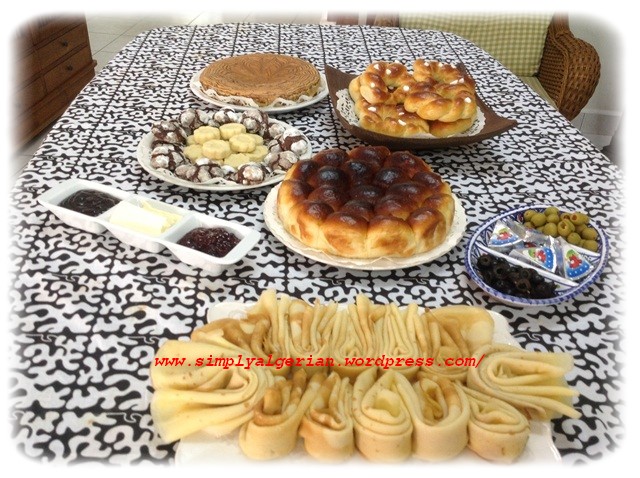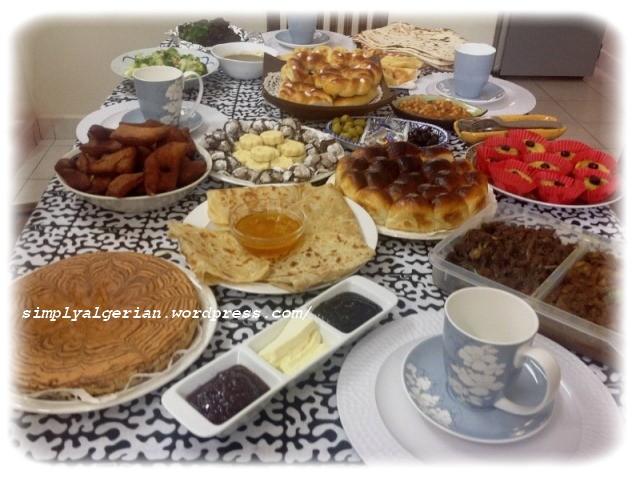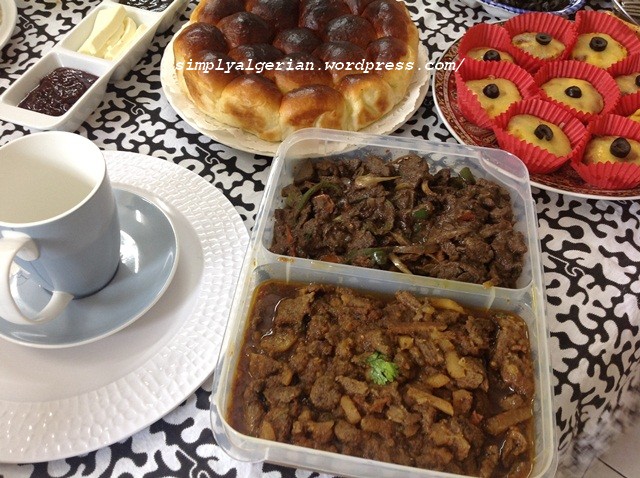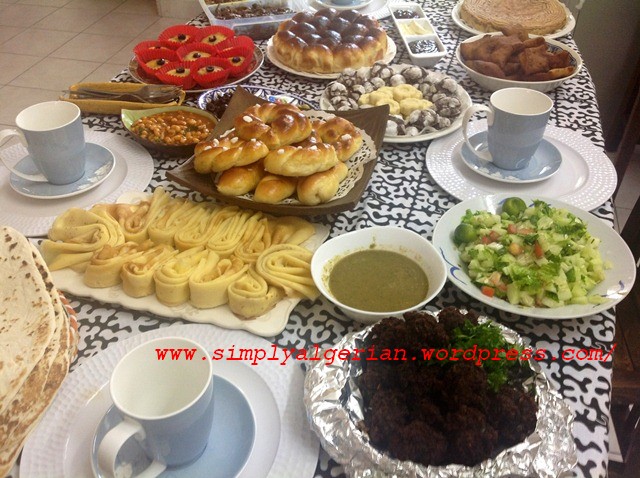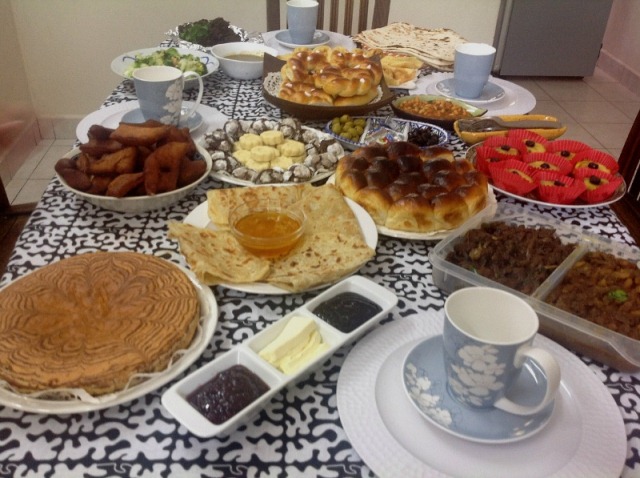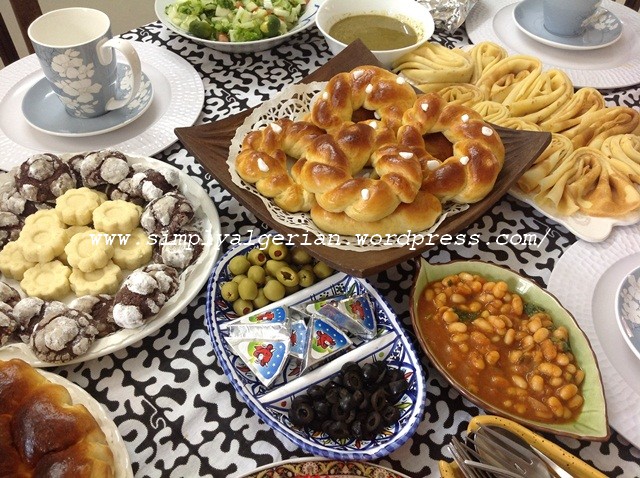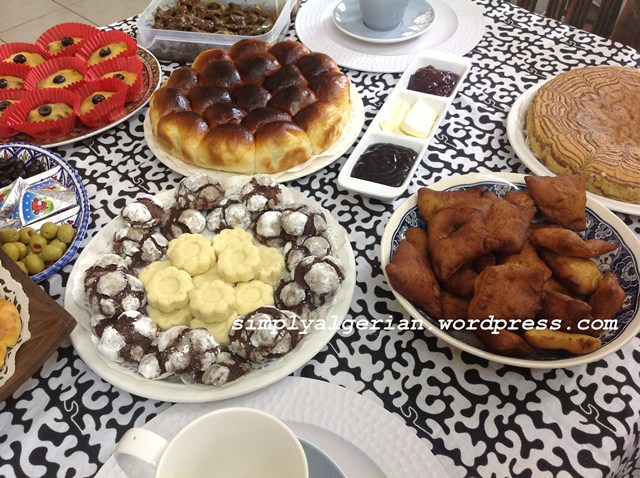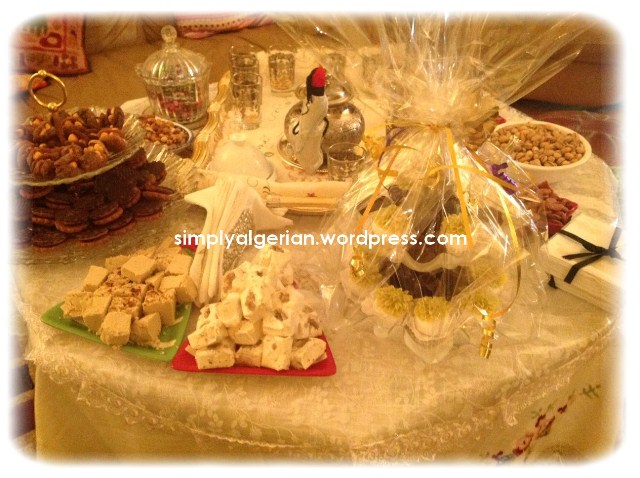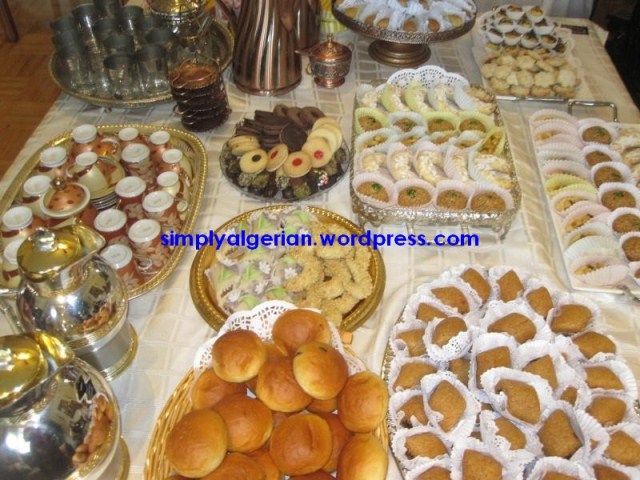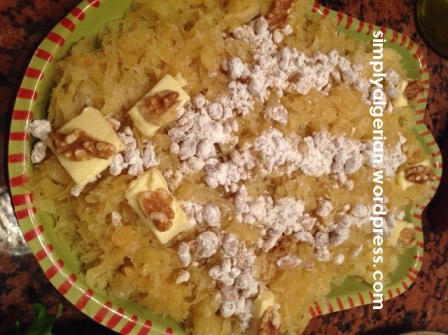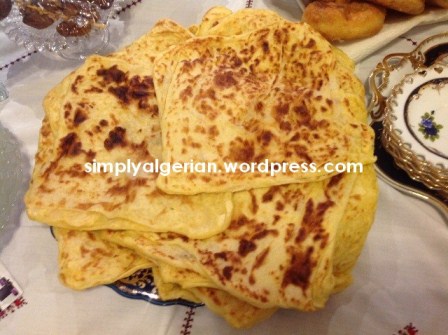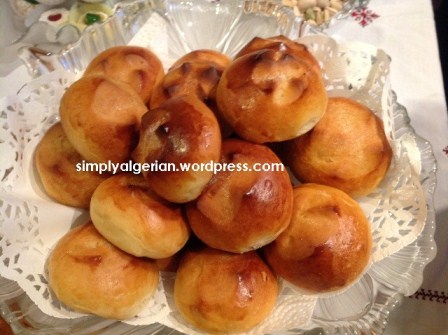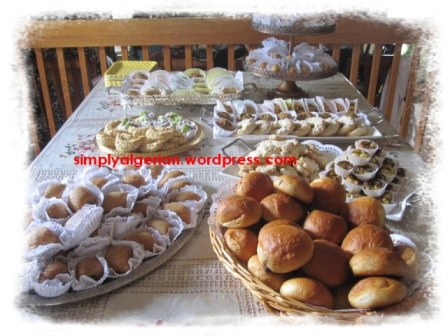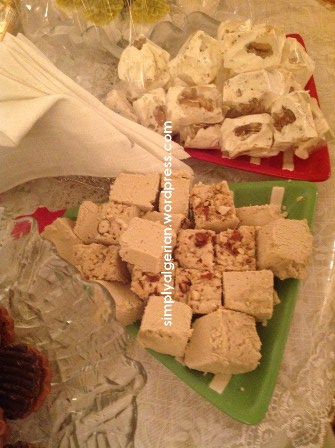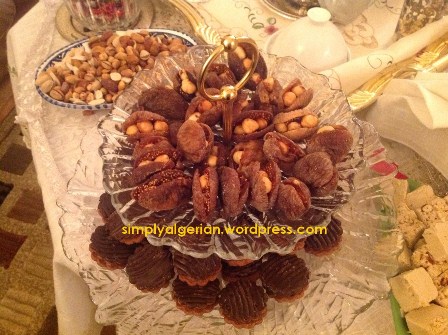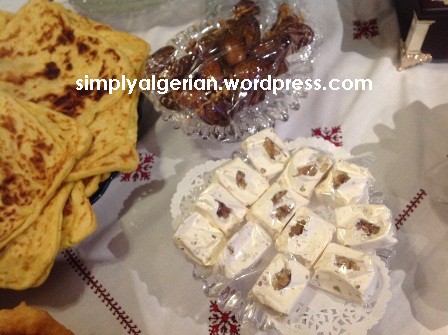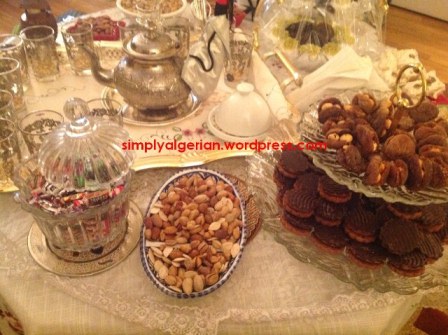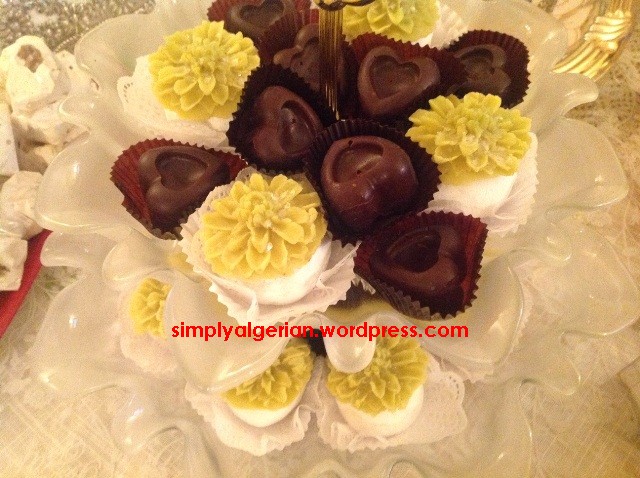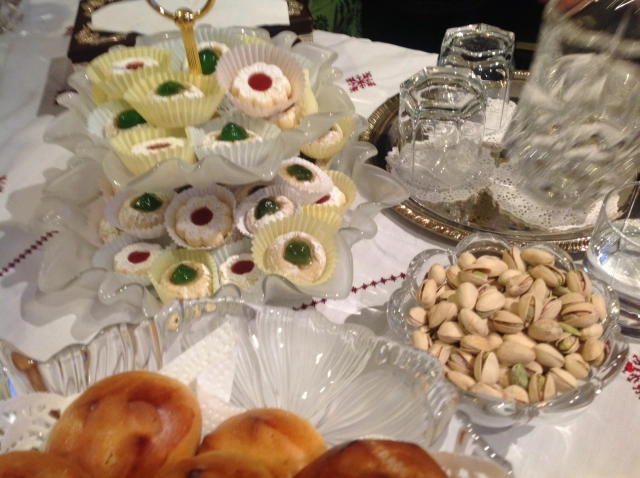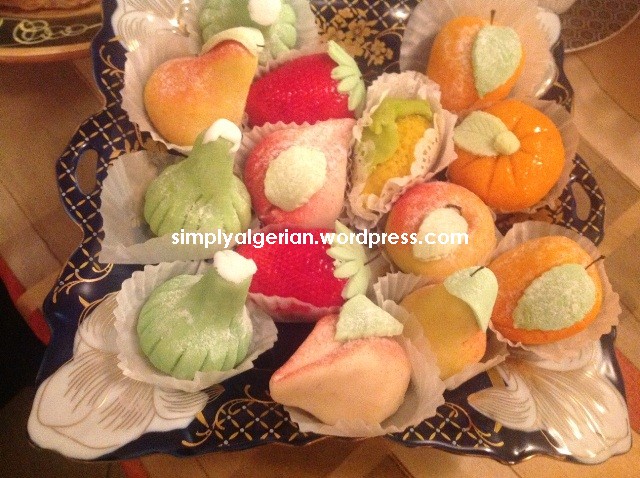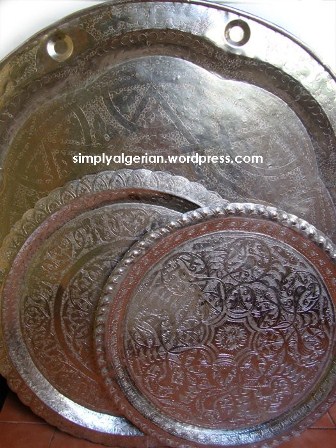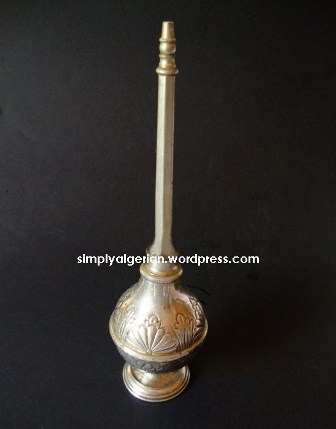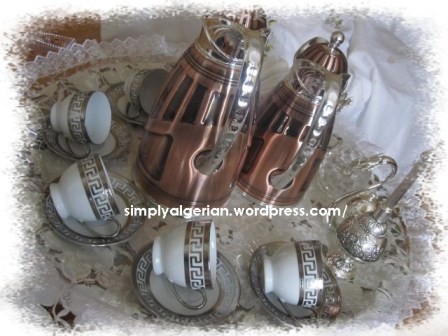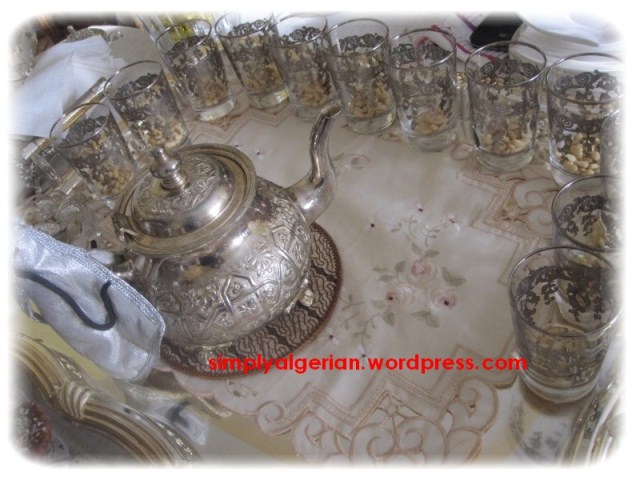Fat ( butter or olive oil ) and tons of sugar, honey and any thing in between!
The french influence is also very present and goes in harmony with the choice of our traditional carb/ sweet breakfast menu!.
Indeed, the concept of a heavy Middle-Eastern breakfast called rayou/ rayoug ( ريوق) is non existent in North Africa… Breakfast is not as important as lunch , dinner or afternoon break . People are usually early birds, they drink their coffee/ mint green tea , take light sweet breakfast in order to make room for their noon lunch .
In Yemen, breakfast, is the most important meal of the day, heavy and savory dishes like red beans, fried kofta, mutton liver are usually served.
So here are few shots from the goodies I managed to prepare :
-Algerian buns- chrik costantinois– stuffed half the dough with chocolate chips and flavored the rest with orange zest ( the plaited crowns),
-Algerian mssemen served the mixture of honey and butter,
-Italian marble cake
-French crepes served with chocolate ganache, rasberry jam and philadelphia cheese.
-Individual tajine bounarine – a speciality of the city of Annaba and constantine . The recipe is similar to this tajine jben but with minced meat instead of chickrn
-Traditional ghraiba and chocolate crackles.
-Green and black olives, vache qui rit cheese.
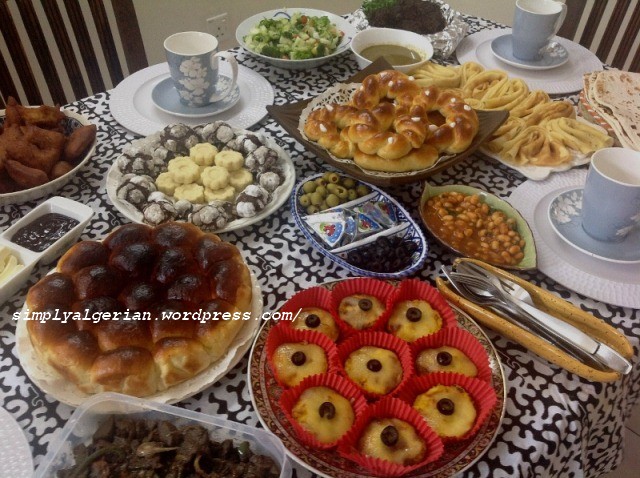
From the yemeni part, my friend brought :
-Yemeni fried kofta with its salad and minty , spicy sauce
-Beans
-Bread,
-Liver and meat dips
-Yemeni doughnut called el megasgas .
FRANCAIS
Pendant les vaccances de paques, mon amie yemeni et moi avions decide’ d’organiser un brunch ( repas matinal ) representant nos deux pays respectifs.
Chacune de nous , devait preparer des plats typiques cosommes generalement pendant le petit dejeuner.
A notre grand amusement, nous avons decouvert qu’il n’avait rien de commun entre le petit dejeuner Algerien et son homologue yemeni.
Au yemen, on sert plusieurs mets sales comme le fois de moutons, kofta frites avec sa salade, et sa sauce epicee’, des haricots en sauce rouge….etc….
En Algerie , les gens se levent generalement tot, mangent leger et par consequent sucre’ pour laisser de la place au dejeuner, qui est souvent servi a midi ou au plutard a 13h.
Et comme nous avons la dent plutot sucre’, un petit dejeuner algerien typique est souvent compose’ de
pains, brioches , crepes ….soit traditionnel ou occidentals, , …servi avec du beurre et de la confiture,
beignets ou crepes traditionnels ( mssemens, ftayers, baghrir….., le tout servi d’un melange de beurre et de miel ou bien d’huile d’olive surtout dans les regions amazigh..
gateaux traditionnels ( sables, croquants, ghraibas, makroud, baklawa…..etc)
Ou bien pains, brioches et patisserie occidentale…
Ceci- ci dit, voici ce que j’ai pu preparer pour ce brunch
-Brioche Algerienne ( Chrik Constantinois) ..faconne’ la moitie’ en ruche d’abeilles et fourree’ de pepites de chocolat et aromatise’ le reste avec le zeste d’orange en lui donnant la forme de couronnes tressees.
–Tajine bounarine en forme individuele- c’est un tajine , typique aux villes d’annaba et de constantine et se prepare comme un tajine jben mais avec de laviande hachee’, a la place du poulet
Ce tajine n’est jamais consomme’ au petit dejeuner mais comme c’est un brunch je voulais introduire des mets sales tout en restant dans le traditionnel.
Graiba traditionnelle et crackles au chocolat
Mssemens servis avec un melange de beurre et de miel
Un marbre‘ italien
Des crepes francaises servi avec de la ganache au chocolat, confiture de murre et fromage philadelphia
Des olives vertes et noire et fromage en portions
Cote’ yemeni, mon amie a ramene’ :
Du pain iranien , des haricots en sauce rouge, kofta frite avec sa sauce epicee’ et salade
Des beignets yemeni , appelles el megasgaz ,
Du foi de mouton et du veau epices.
